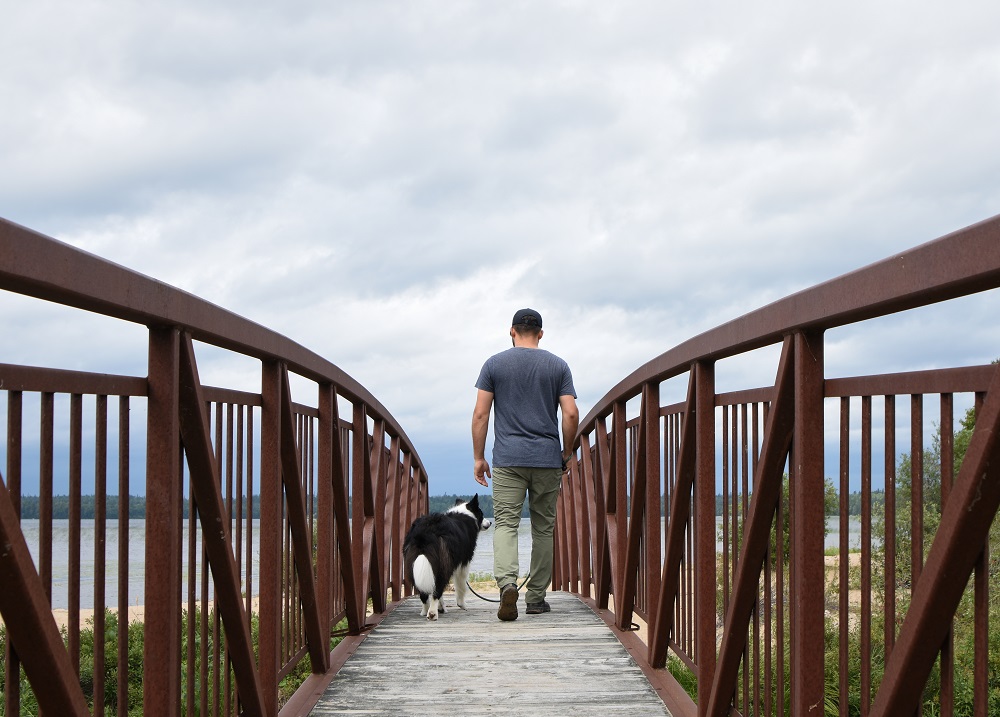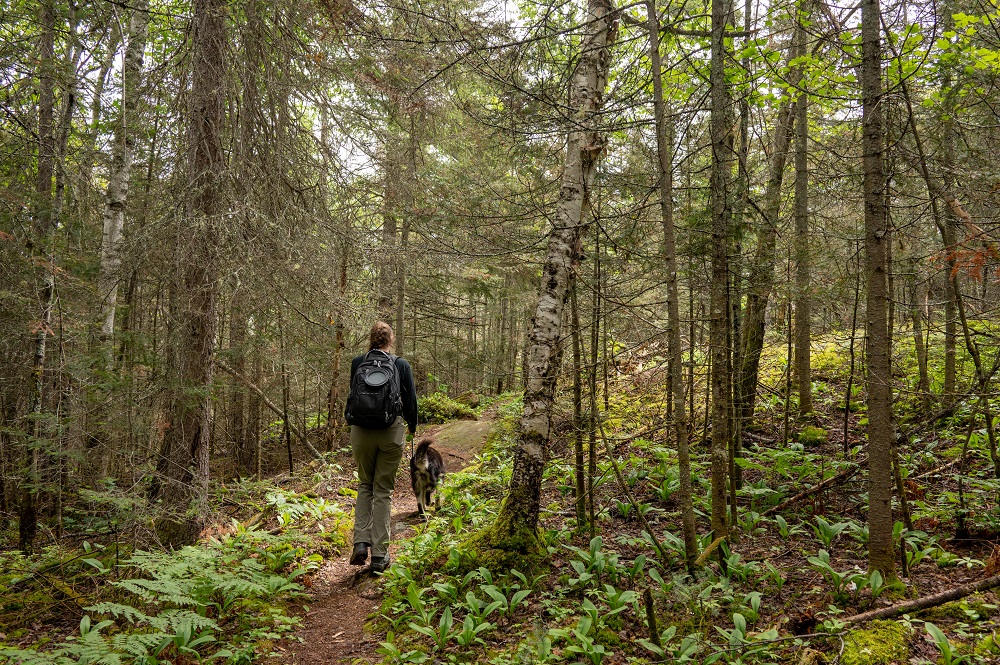Today’s blog comes from Ontario Barks’ Activities Director.
We all know the excitement that builds in your chest when you feel the car pull off the highway, gently rolling up to the gatehouse of your favourite park.
As your person navigates parking, a dance takes over the back half of your body, with your tail bopping out a lively beat.
But I’m here today to talk about what happens next, when the car shuts off and they turn to you and ask, “Are you ready to go?”
As Activities Director of Ontario Barks, it is my job to ensure you are on your leash when your adventure begins.
But I’m a good dog!
Listen, we’re all good dogs here. That’s not the issue.
We’re asking you to use your leash because when you’re hiking in a forest or on a beach, you’re visiting the homes of lots of other animals, some of whom are considered endangered or at risk.
Park humans put the paths in places where they won’t disrupt these homes. Going off-leash undoes this thoughtfulness and risks damaging or even destroying these delicate habitats. Woof.
When you go off-trail, your paws can cause serious damage to another animal’s home or food supply.
Dogs are great. We can sit, we can stay. We can defend our family from the vacuum.
But we can’t tell when we are trampling a delicate habitat. They just haven’t integrated this information in Obedience 101. So, for now, we have to rely on leashes and trails.
Protecting the introverts
Ontario Barks loves seeing (leashed) dogs in provincial parks!
But not all of our residents feel the same way. In particular, there are shy animals that build their homes at ground level that really don’t want to entertain unexpected guests.
Howl we win them over? By giving them their space!
We often think of birds as living in trees, but some of the animals that trails protect are birds that build their homes on the ground.

This includes plovers, Killdeers, and Eastern Whip-poor-wills whose eggs can get trampled by dogs cutting through protected areas.
Other ground dwellers will let you know that they aren’t happy to see you, and this can be unsafe for both them and you.
Think about your feelings towards delivery drivers. That’s the vibe here.

Both porcupines and skunks will stand their ground when confronted by an unwelcome guest.
But even if no one gets hurt, telling you to back off uses up their defenses, which take time to recharge. This leaves them unable to protect themselves in the meantime.
So not only does running into one of these residents spell a quick and unpleasant end to your trip, it also leaves the other animal stressed out and vulnerable.
Dog-gone-it!
Avoiding the hitchhikers
We were absolutely a-paw-led when we learned what invasive species were, and even more upset when we learned that these uninvited guests can use dogs to travel and spread!
Going off-leash means trampling plants and spreading invasive species. Even the most agile greyhound moving through the forest will break plants underfoot while running.
And once native plants are dead or damaged, faster-growing opportunistic invasives like Dog-strangling Vine (I beg your pardon?!) and Poison Ivy move in to take the space.
Sticking to cleared paths also means avoiding seeds, burs, and bugs that are looking to hitch a ride on the S.S. Rover.
By not running through underbrush, you ensure that invasive species growing in one area won’t get a free ride to another area of the park, or another park entirely!
A new leash on life
When you need to burn off some extra energy, show your person this list of off-leash exercise areas where you can get your zoomies out.
And when it’s time to splash around with pals, head to the nearest dog beach for a swim.
We hope that you and your person have many snoof-filled adventures ahead.
And we hope that when you hit the trail, you think of the Killdeer and plover, the porcupine and skunk, and everyone else who is welcoming you into their home.






